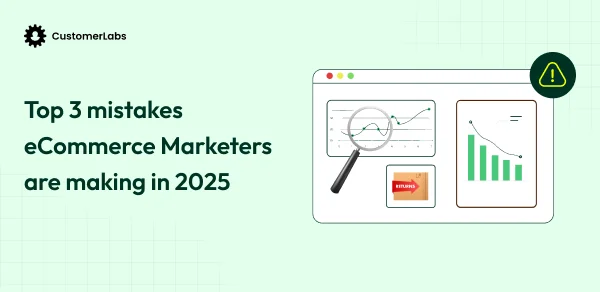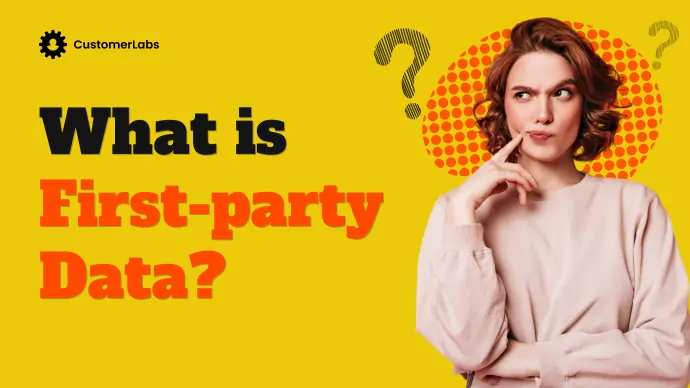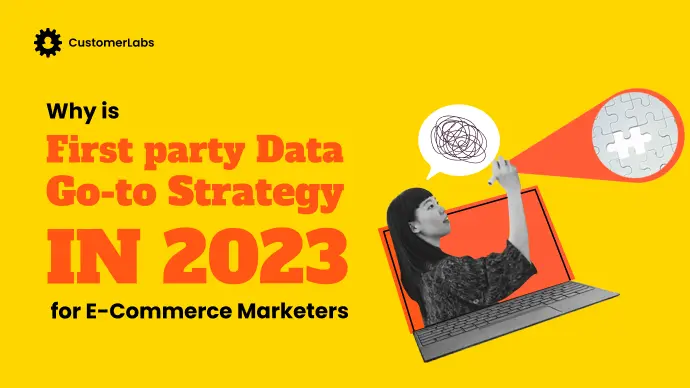Super Bowl is not just a football game; it is much more than that. It is the right time where you can employ all the marketing gimmicks and place your product or services in front of the right audience. Because Super Bowl-related purchases skyrocket, from food and drinks to merchandise and electronics, there is increased consumer spending.
Millions of brands market their products and use this wonderful timing to pitch people. And not to mention the big sharks investing hell a lot of money into traditional advertising, but small and medium-sized businesses can also benefit from these occasions if their marketing strategies are built on solid ground. By which I mean on the rock solid data, your own first-party data, and say bye to the competition!.
In this blog, let’s explore some Super Bowl marketing strategy with first-party data that will help you ace your Super Bowl campaigns like never before.
Before getting deep into the strategies, we’ll explore a few of the challenges of advertising that interfere with your marketing efforts.
Challenges of Super Bowl Advertising
While the Super Bowl offers brands a golden opportunity to reach millions, advertising during this event is not without challenges. Many businesses struggle with:
High Costs and Intense Competition
Did you know that, in 2025, the cost of a 30-second Super Bowl TV commercial has reached record highs, with prices averaging $8 million?
I think with the above statement it is very clear, and you won’t need anymore explanation. The competition for consumer attention is fierce, with global brands investing in high-production ads featuring celebrities, humor, and emotional storytelling. Small and mid-sized businesses (SMBs) often get overshadowed and find it difficult to justify the massive investment.
Privacy & Tracking Limitations
One of the most common challenges is being unable to track the user across multiple touch points. Why is that happening? Because ad platforms started to prioritize user privacy and the deprecation of third-party cookies made the tracking extra difficult.
Be it commercials on TV, Youtube or social media, they lack granular user data and lack granular data insights on who saw the ad and whether it led to conversions. And building add campaigns with these broken data, rest assured that you cannot hit the return on investment that you are trying to achieve.
Tip: The recent data restrictions on the health and wellness industry put forth by Meta emphasize the fact that you should be super conscious about the data you send to ad platforms.
Lack of Personalization & Low Conversion Rates
Super Bowl ads are often designed for mass appeal, leading to generic messaging that may not resonate with different customer segments. The effectiveness of your advertising campaigns is destroyed if you are not adding the special herb of personalization. According to studies, users are more likely to interact with ads that offer personalized messaging.
When the users cannot relate to your brands, they won’t engage with your ads. They won’t like, share, click or do the desired action that you want them to do. This will make your ad end up with lower conversion rates, which in turn hits your ROAS.
These challenges are just enough to sink your ship, you know, like the Titanic and the iceberg. So how are you planning to break or pass through these icebergs? You know what I meant, right? Not the literal iceberg, the challenges.
Let’s get into the strategies to overcome these challenges and make the Super Bowl campaigns super awesome.
Overcoming the challenges: Super Bowl marketing strategy with First-party data
Break the competition
How can you do that? With first-party data, instead of relying on third-party cookies, you can collect the exact interaction and information given by your user. By collecting this data, you can target effectively and reach out to your own customers who are most likely to convert or purchase.
Using first-party data can significantly reduce your ad spend because of the right signals that you are providing to the ad platforms.
Establish robust server-side tracking with 1PD tracking
I said use your first-party data, but how to track and collect first-party data effectively? That’s the question, right? By implementing server-side tracking with 1PD tracking, you can accurately track your user interactions made on your website.
Capture insights like browsing behavior, purchase history, email interactions, and engagement patterns without violating privacy regulations or relying on third-party data.
Audience Segmentation
Now that you have your first-party data, start to segment the audience based on interests or buying behavior. But don’t just stop there; create more granular audience segmentation based on specific categories, high or mid-AOV, gender, demographics and preferences.
Target each segment with specific personalized messaging in a way the user can resonate with your product or services.
Retargeting & Lookalike Audiences
Use your first-party data to create retargeting and lookalike audiences. to re-engage warm leads and expand their reach efficiently. For instance, create lookalike audiences based on your best customers to reach similar high-intent users. Optimize ad campaigns on platforms like Meta Ads, Google Ads, and YouTube to convert users. You can also retarget website visitors who browsed Super Bowl-related products but didn’t complete a purchase.
Additionally, you can retarget your past-year Super Bowl audiences or even try retargeting other sales-targeted users like Black Friday, Cyber Monday, and clearance sales.
Personalized Email Campaigns
Email marketing remains cost-effective and high-converting when powered by first-party data. You can send personalized emails with offers and combo discounts targeting the audience for every specific product based on the behavior on the website. You can send personalized emails using past purchase data and engagement history to make promotions relevant. Use automated email sequences to nurture leads before, during, and after the Super Bowl.
Geo-Targeted Ads for Local Businesses
This strategy is extremely effective for businesses with physical locations or delivery services. Geo-targeted advertising helps reach local customers looking for game-day deals. Activate your first-party data and optimize your campaigns targeting a combination of locations, purchase history, and browsing behavior to promote relevant offers. Use push notifications, localized Google Ads, and social media promotions to drive foot traffic. Offer in-store pickup, same-day delivery, or time-sensitive deals to encourage immediate action.
With these strategies, you can rock your Super Bowl ad campaigns by targeting the right audience and using the demand to increase your ROAS.
But to execute all these strategies, you need a foundation, which is first-party data. Even if you are already collecting it, you still need to activate the data to make it highly resourceable.
The next section will show how to get that ready to use first-party data.
And become a billionaire overnight. I think I went a bit overboard right there 😂
Make Super Bowl marketing Strategy Profitable with 1PD Ops
The recipe to make that ready-to-use first party with 1 ingredient. Implement PD Ops.
1PD (first-party data) ops platform will help you to collect, unify, segment and activate your first-party data. What all you can do
- Have control over your own first-party data
- Enhance tracking with 1PD Tracking in a toggle on
- Integrate with multiple destinations without the need of a developer
- Segment audience as minutely as you want
- Collect external IDs and merge effortlessly
- Import data from multiple sources CRM, offline data
- Send events to ad platforms at ease
- Create offline conversions data on ad platforms
- Collect user data being privacy-compliant
- And list goes on and on…
To know more about all these features, check out CustomerLabs, 1PD Ops platform, the world’s 1st first-party data Ops platform.
Talk to the experts about your marketing needs and get a unique 1PD Ops strategy specially crafted for you.







